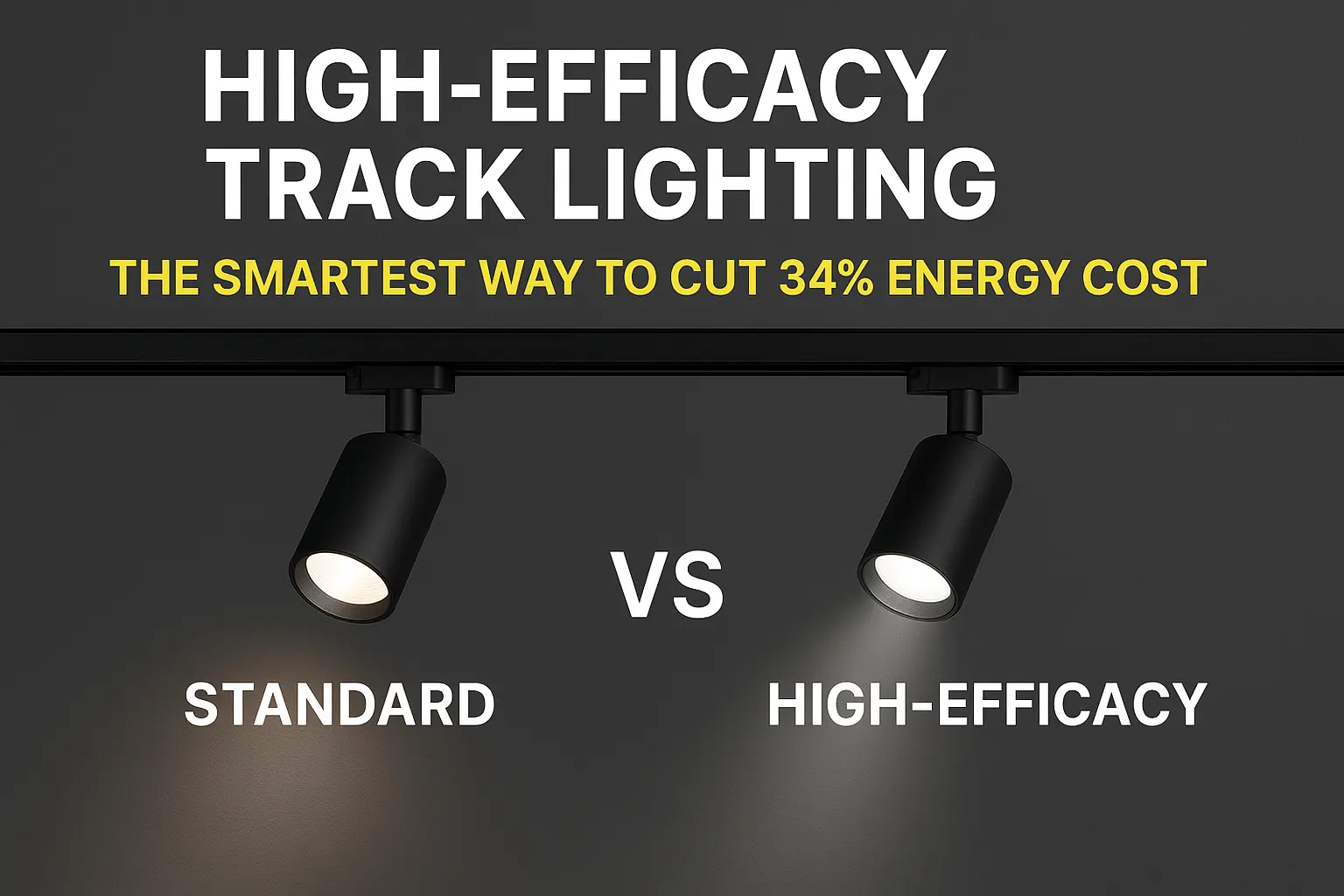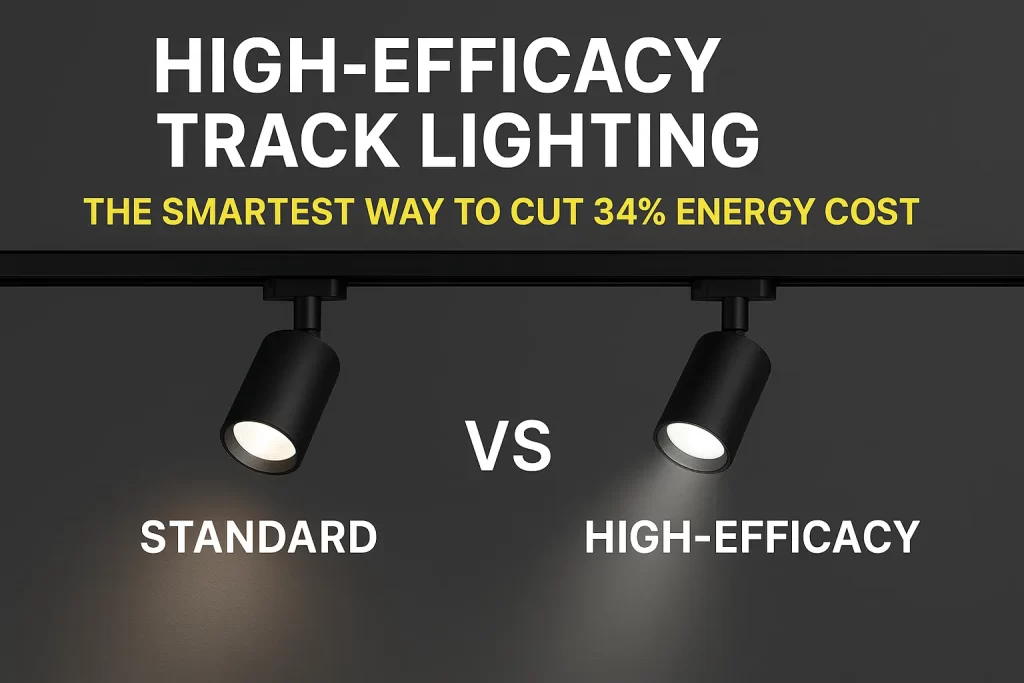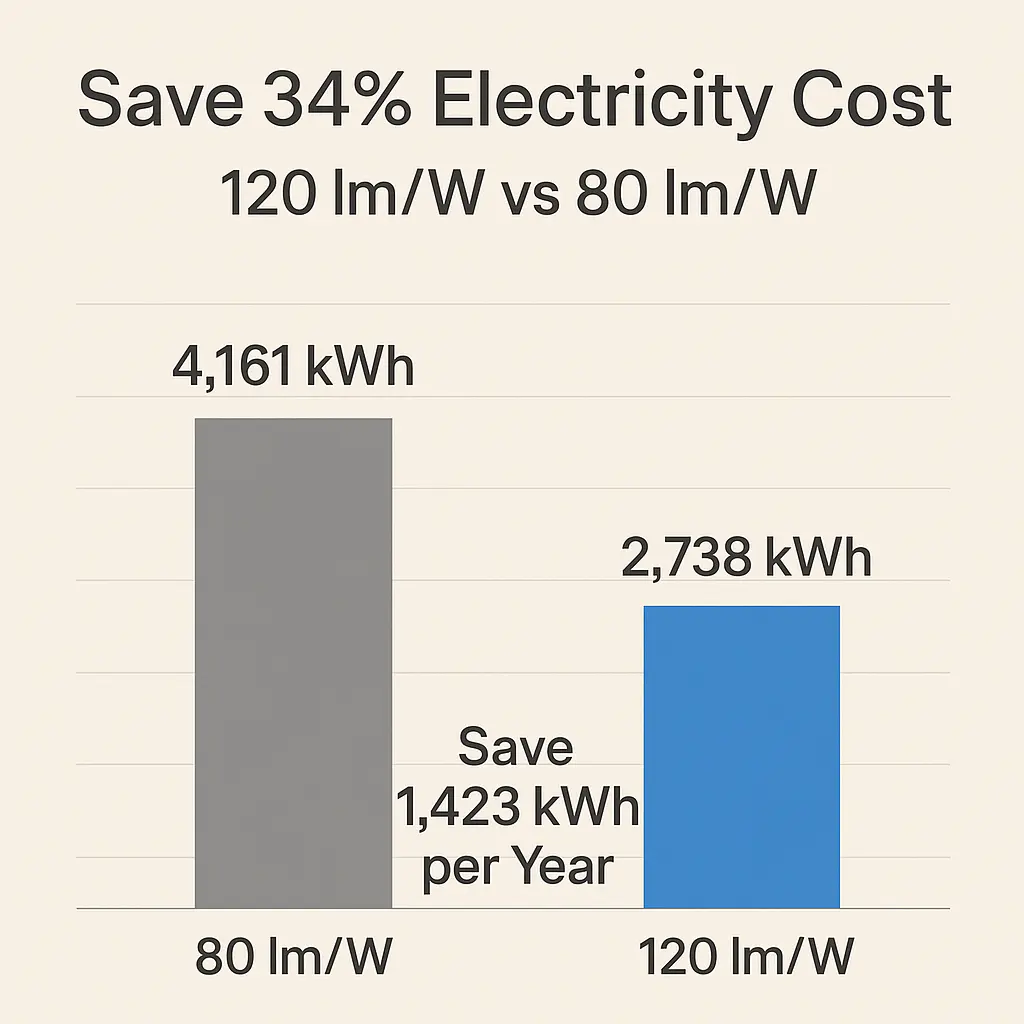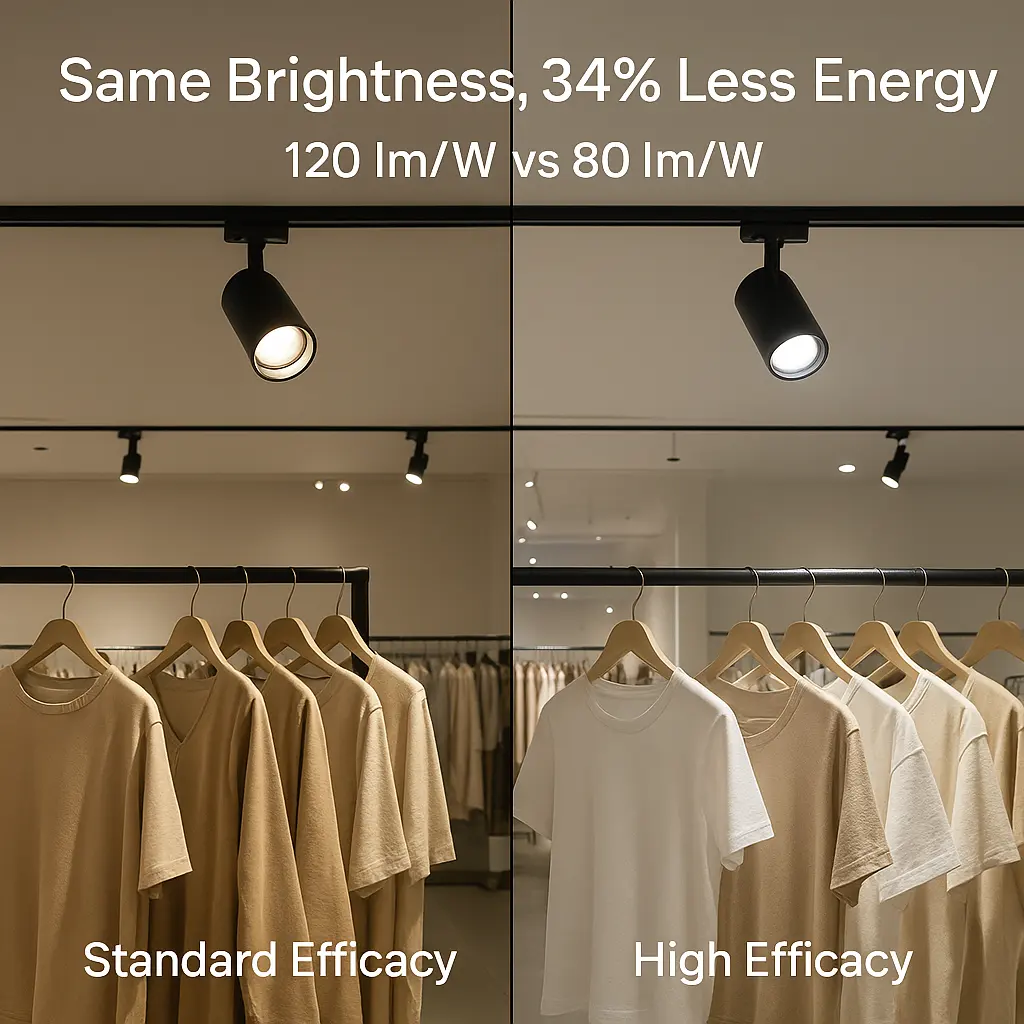High-Efficacy Track Lighting: More Light, Less Power
By Powerstar

In today’s lighting industry, High-Efficacy Track Lighting is rapidly becoming the preferred choice for commercial projects and architectural spaces. As global energy-efficiency standards rise and lighting performance becomes a key competitive factor, high-efficacy solutions are essential for reducing energy consumption and improving project ROI. This article explains the difference between standard efficacy and high-efficacy luminaires, supported by IES-style illustrations and practical use cases, helping lighting wholesalers, designers, and project contractors make informed decisions.
1. Why High-Efficacy Track Lights Are Becoming the New Standard
Across retail stores, showrooms, galleries and commercial spaces, lighting buyers are asking:
- How can we reduce electricity cost?
- How can we increase brightness without increasing energy usage?
- How can we upgrade lighting without changing the store layout?
The answer is simple: High-efficacy track lighting.
Same brightness, lower power.
Or even more brightness with less energy.
2. What Is Efficacy? What’s the Difference Between 80 lm/W and 120 lm/W?
Efficacy (lm/W) means:
How many lumens of brightness can be produced from 1 watt of power.
Example comparison:
| Efficacy | Power | Lumen Output | Notes |
| 80 lm/W | 38W | 3,040 lm | Regular market track light |
| 120 lm/W | 25W | 3,000 lm | High-efficacy track light |
Which means:
✔ Same brightness → 34% less power
✔ Lower heat output
✔ Longer driver & LED lifespan
✔ Better energy performance & ESG compliance
3. Real Energy Consumption Case: Save 1,423 kWh/Year (Per 30 Fixtures)
Assuming a retail store using 30 track lights, 10 hours/day:
80 lm/W (38W)
- Yearly consumption: 4,161 kWh
120 lm/W (25W)
- Yearly consumption: 2,738 kWh
💰 Savings: 1,423 kWh/year (34.2%)
For 10 stores in a retail chain:
= 14,230 kWh saved per year
And electricity cost drops immediately.
4. Conceptual IES Comparison: Better Efficacy = Better Light Quality
Beyond energy saving, high efficacy improves visual performance.
80 lm/W IES Characteristics
- Softer and weaker beam
- Lower peak intensity
- More wasted light in ineffective zones
120 lm/W IES Characteristics
- Stronger center beam
- Higher peak intensity
- Higher lux level at same wattage
- Cleaner, more uniform beam
Essential for retail, galleries, and premium retail lighting.
5. Seven Key Benefits of High-Efficacy Track Lights
1️⃣ Save 30–50% energy
The most direct, measurable advantage.
2️⃣ Higher brightness with fewer fixtures
Improves lighting efficiency per square meter.
3️⃣ Lower heat and longer lifespan
Better reliability for long operating hours.
4️⃣ Reduce operational costs
Ideal for long-hour applications (8–14h/day).
5️⃣ No change in layout required
Simple upgrade, immediate results.
6️⃣ Compliance with global energy standards
MEPS, ERP, DLC, etc.
7️⃣ Better visual performance
More consistent, more vibrant illumination.
6. Best Application Scenarios
- Retail & fashion stores
- Shopping malls & chain stores
- Showrooms & auto dealerships
- Galleries & museums
- Offices & commercial spaces
- Any long-hour lighting project
The longer the lighting stays on, the faster the ROI.
Conclusion
High-Efficacy Track Lighting is not just a trend—it is a long-term upgrade in commercial lighting quality. With better energy efficiency, improved beam control, and higher visual comfort, it continues to shape the future of retail, architectural, and professional lighting applications worldwide.






